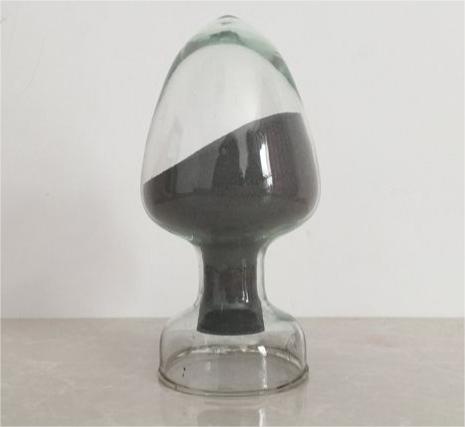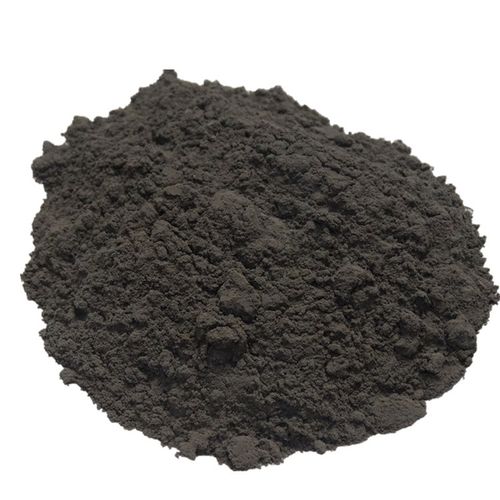Overview of Vitrified Silicon Carbide for Polishing Grinding Wheels
Silicon Carbide (SiC), also known as carborundum, is a synthetic ceramic compound made up of silicon and carbon atoms. Known for its exceptional hardness, thermal conductivity, and resistance to chemical reactions and wear, SiC is a versatile material widely used in high-performance applications that demand superior physical and electronic properties. Its unique crystal structure, which can exist in several polytypes, contributes to its multifaceted utility across various industries.
Features of Vitrified Silicon Carbide for Polishing Grinding Wheels
-
Exceptional Hardness: Silicon carbide ranks just below diamond and boron carbide in hardness, making it an ideal abrasive material.
-
High Thermal Conductivity: It is an excellent heat conductor, capable of dissipating heat rapidly, which is crucial for high-power electronic and semiconductor devices.
-
Chemical Stability: Resistant to most acids, alkalis, and salt solutions, SiC maintains its properties even under harsh chemical environments.
-
Wide Bandgap Semiconducting Material: As a wide bandgap semiconductor, it operates at higher temperatures and frequencies than conventional semiconductors like silicon.
-
Mechanical Strength and Wear Resistance: Offers high mechanical strength and excellent wear resistance, suitable for mechanical seals, bearings, and pump components.
-
Thermal Shock Resistance: Can withstand rapid temperature changes without cracking or degrading, important for applications involving cyclic heating and cooling.

(Vitrified Silicon Carbide for Polishing Grinding Wheels)
Parameters of Vitrified Silicon Carbide for Polishing Grinding Wheels
1. SiC: Silicon carbide is an essential component of glass and metal substrates used in various applications, including grinding wheels. The specific amount of silicon carbide required will depend on the material type of the wheel and the desired surface roughness.
2. Temperature: Silicon carbide processing temperatures vary widely depending on the application. Generally, high-temperature processes (such as buffer conditioning) require less SiC to achieve good workability than low-temperature processes (such as conventional refining).
3. Processing time: Process times can also affect the concentration of SiC in the grinding wheel. High-qualitySiC is commonly employed in high-performance applications, such as machine vision and precision navigation.
4. Machine specifications: Machine specifications such as power output, speed, and durability can also impact the demand for specific amounts of SiC. A combination of these parameters should be considered when choosing a production quantity for a particular application.
5. management: SiC may produce dust or particulate matter during processing, which can contribute to air pollution and environmental concerns. Therefore, proper waste management strategies should be implemented to ensure the responsible use of this resource.
6. Sustainability: Silicon carbide has a short lifespan compared to other materials, making it important to consider its environmental impact during production and disposal. It is also more expensive to dispose of than some other polymers, so careful planning and sustainable disposal practices should be taken into consideration.
In summary, the specific amount of silicon carbide required for polishing grinding wheels will depend on a variety of factors, including the material type, processing temperature, machine specifications, waste management, and sustainability considerations. Careful consideration of all these factors will help ensure that the highest quality and performance of your grinding wheel is achieved.

(Vitrified Silicon Carbide for Polishing Grinding Wheels)
Applications of Vitrified Silicon Carbide for Polishing Grinding Wheels
-
Semiconductor Devices: Used in high-voltage, high-frequency, and high-temperature power electronics, such as MOSFETs, Schottky diodes, and power modules.
-
Abrasive Materials: As an abrasive grain in grinding wheels, sandpapers, and cutting tools due to its hardness and wear resistance.
-
Refractories and Furnace Linings: In high-temperature furnaces and kilns because of its outstanding thermal stability and resistance to corrosion.
-
Ceramic Armor: In lightweight armor systems due to its combination of hardness, toughness, and low density.
-
Chemical Process Equipment: For pumps, valves, and seals in corrosive chemical environments where metals would corrode.
-
Wire Sawing: As the abrasive medium in wire saws for slicing silicon wafers in the semiconductor industry and gemstones.
Company Profile
MyCarbides is a trusted global chemical material supplier & manufacturer with over 12-year-experience in providing super high-quality carbides and relative products.
The company has a professional technical department and Quality Supervision Department, a well-equipped laboratory, and equipped with advanced testing equipment and after-sales customer service center.
If you are looking for high-quality carbide materials and relative products, please feel free to contact us or click on the needed products to send an inquiry.
Payment Methods
L/C, T/T, Western Union, Paypal, Credit Card etc.
Shipment
It could be shipped by sea, by air, or by reveal ASAP as soon as repayment receipt.
FAQs of Vitrified Silicon Carbide for Polishing Grinding Wheels
Q: How is Vitrified Silicon Carbide for Polishing Grinding Wheels produced?
A: Vitrified Silicon Carbide for Polishing Grinding Wheels is primarily synthesized through the Acheson process, which involves heating a mixture of silica sand and carbon (usually in the form of coke) in an electric furnace at high temperatures.
Q: Is Vitrified Silicon Carbide for Polishing Grinding Wheels conductive?
A: Yes, Vitrified Silicon Carbide for Polishing Grinding Wheels is a semiconductor material with unique electronic properties, including high breakdown voltage and thermal conductivity, making it suitable for power electronics.
Q: Can Vitrified Silicon Carbide for Polishing Grinding Wheels be used in extreme environments?
A: Absolutely, SiC’s high temperature stability, resistance to radiation damage, and ability to withstand thermal shocks make it ideal for applications in space, nuclear reactors, and deep-well drilling.
Q: What gives Vitrified Silicon Carbide for Polishing Grinding Wheels its unique properties?
A: The covalent bond structure of Vitrified Silicon Carbide for Polishing Grinding Wheels, along with its tight crystal lattice, contributes to its hardness, high melting point, and resistance to wear and corrosion.
Q: Is Vitrified Silicon Carbide for Polishing Grinding Wheels biocompatible?
A: SVitrified Silicon Carbide for Polishing Grinding Wheels has been investigated for biomedical applications due to its biocompatibility, inertness, and durability, with potential uses in orthopedic implants and surgical instruments.

(Vitrified Silicon Carbide for Polishing Grinding Wheels)





